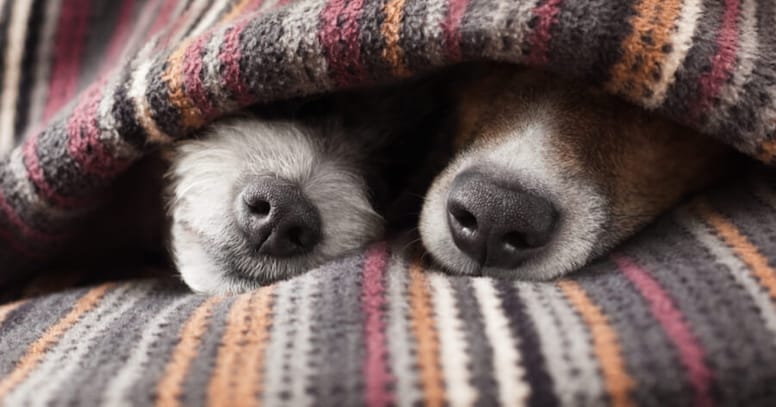Ask yourself: when it’s really chilly out, and you’re wearing a coat, you still feel the cold right? Well it’s the same for our pets! Their fur coats give them some protection from the elements, but it’s not enough to keep them safe when they are exposed to cold temperatures for a long period of time. Prolonged exhibition to the cold can provoke hypothermia and worsen pre-existing medical conditions such as arthritis. Additionally, dogs’ ears, noses, and paws are not protected by fur, and thus, are highly susceptible to frostbite.
To preserve your pet's health and protect your dog from cold weather this winter, heed the following advice:
Add a layer
Not all dogs suffer from the cold in the same way. For example, long-haired and/or double-coated dogs such as Siberian Huskies and Alaskan Malamutes fair pretty well in the cold weather.
However, short-haired dogs such as Greyhounds or Dobermanns are much more likely to feel cold during the winter. Small dogs such as Italian Greyhounds or Chihuahuas are particularly sensitive. Puppies, seniors, dogs who are ill, and short-legged dogs whose bellies are low to the ground are also more at risk.

If you know your dog is sensitive to the cold, then don’t hesitate to put a sweater or coat on him! Nowadays, there is plenty of choice out there for every dog-body type. A good sweater or coat should go at least from the base of the neck to the base of the tail, and ideally covers the stomach (without covering the parts your dog will need to use)! If your dog can tolerate them, you can also purchase little boots to protect his paws from dryness, cracking, and frostbite (this is especially useful when there is snow on the ground).
As for dogs with hair that grows continually, such as Poodles or Yorkshire Terriers for instance, their coats should be kept long over the winter. This gives them an extra layer to trap their body heat in! However, remember that a dog with a long coat is a dog that needs extra attention when it comes to maintenance, so keep those combs handy!
Schedule your walks wisely
If you can, try to walk your dog during the warmest and sunniest parts of the day. This is usually between late morning and early afternoon. This not only means you’ll be avoiding the cold at its worst, but you and your dog will be able to soak up all the vitamin D too! You can shorten your walks during the cold winter months, and instead compensate with indoor exercise such as fun games of tug-of-war!
Take special care of the skin and paws
Cold weather can cause your dog’s skin to become dry and flaky. Coconut oil is a natural moisturizer that can be added to your pet’s food to help keep his skin and coat healthy. It can also be applied to his paws to prevent the pads from cracking. Special paw salve can also be purchased and applied for this purpose.
When salt is used to dissolve snow and ice on roads and sidewalks, your dog’s paw pads will be especially dry. Additionally, too much salt intake can be toxic to your dog, so it is safer to wipe down or even wash your dog’s paws after you’ve taken a walk, to prevent him from licking any salt off his paws.
When it’s snowy out, check your dog’s paws for any ice build-up. You can trim the fur around his paws and between his pads if this becomes a problem.

Provide a comfortable bed
If your dog is sensitive to the cold, he might feel it indoors too. Make sure he has access to a bed in a warm part of the house, and that you have plenty of blankets to cover him with if he likes to burrow underneath them. Pita beds (especially popular among the Greyhound group) can also be purchased, and enable dogs to burrow inside of a “pillow den”. Though it may seem tempting, do not place your dog’s bed close to a space heater, as these could easily be tipped over and start a fire.
Pets like to have options, so it’s best to have at least 2 beds per pet in the house, so they can decide themselves where they feel more comfortable.
Be winter smart
This goes without saying, but don’t leave your dog outside for too long when the temperature drops. Your dog should live indoors with you, especially during the winter. If he’s the type of dog who likes to be out in the garden for most of the day, keep a watchful eye on him. Look out for any signs of discomfort such as shivering, restlessness, or whining. If you notice any of these behaviours, take your dog inside immediately. Likewise, do not leave your dog in the car when it is very cold out. Though leaving a dog inside a cold vehicle does not present the same immediate health risks as leaving a dog in a hot car, it can still become uncomfortable very quickly. If you have to run errands in cold winter weather, leave your pet at home!



